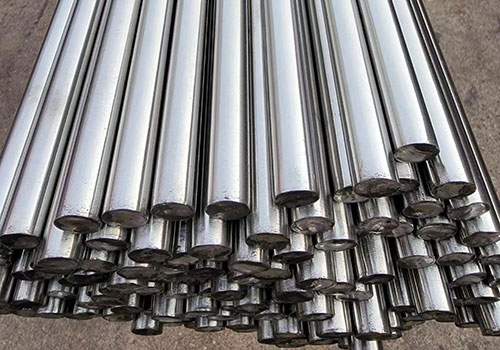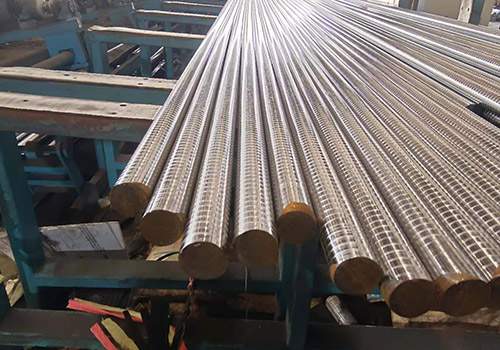
How to Choose the Right Bright Steel Round Bar
Introduction
Choosing the right bright steel round bar for your project is essential to ensure the strength, durability, and performance of the final product. Whether you’re working in construction, manufacturing, or engineering, understanding the key factors that influence your choice will help you make an informed decision. This blog will guide you through the process of selecting the best bright steel round bar, covering aspects like material grades, sizes, and applications.
What is Bright Steel Round Bar?

Before diving into the selection process, it’s crucial to understand what a bright steel round bar is and its primary uses. Bright steel round bars are cold-finished steel products that have a smooth, bright surface, making them ideal for precision machining applications. These bars are typically used in the manufacturing of components that require close dimensional tolerances and a superior surface finish, such as shafts, gears, and fasteners.
Importance of Choosing the Right Bright Steel Round Bar
Choosing the right bright steel round bar impacts the overall quality and functionality of the product being manufactured. The wrong choice can lead to issues like premature wear, structural failure, and even safety hazards. Therefore, understanding the factors that determine the right bar for your specific application is crucial.
Factors to Consider When Choosing a Bright Steel Round Bar
Material Grades and Composition
The material grade of a bright steel round bar is one of the most critical factors to consider. Different grades offer varying levels of strength, hardness, and corrosion resistance. Common material grades include:
- Mild Steel (EN1A): Known for its machinability and low carbon content, making it ideal for general-purpose applications.
- Carbon Steel (EN8): Offers higher strength and hardness, suitable for manufacturing components like shafts and gears.
- Alloy Steel (EN24): Provides high strength and toughness, often used in the automotive and aerospace industries.
- Stainless Steel (304/316): Known for its corrosion resistance, ideal for applications in harsh environments or where aesthetics are important.
Selecting the right material grade depends on the specific requirements of your project, such as load-bearing capacity, environmental exposure, and required surface finish.
Size and Dimensions
The size and dimensions of the bright steel round bar are critical for ensuring that it fits the intended application. Round bars are available in a range of diameters and lengths. Common diameters range from 6mm to 100mm, while lengths can vary depending on the supplier.
Table: Common Sizes of Bright Steel Round Bars
| Diameter (mm) | Length (meters) | Common Applications |
|---|---|---|
| 6mm | 1-6 meters | Precision components, fasteners |
| 12mm | 1-6 meters | Small shafts, machining parts |
| 25mm | 1-6 meters | Gears, large fasteners |
| 50mm | 1-6 meters | Structural components, heavy machinery |
| 100mm | 1-6 meters | Large shafts, industrial machinery parts |
Selecting the appropriate size ensures that the bright steel round bar will perform optimally in its intended application, without unnecessary waste or additional machining costs.
Surface Finish and Tolerance

The surface finish of a bright steel round bar is another important factor. Bright bars are known for their smooth surface, which is achieved through cold finishing processes. This finish not only enhances the appearance but also improves the bar’s resistance to corrosion and wear.
Surface tolerance refers to the allowable deviation in the bar’s dimensions from the specified size. Tight tolerances are crucial in applications where precision is required, such as in the manufacturing of high-precision components like bearings or hydraulic cylinders.
Application-Specific Requirements
Different applications require different properties in a bright steel round bar. For example:
- Machining: Requires bars with good machinability, typically mild steel or free-cutting steel grades.
- Welding: Requires bars with good weldability, usually low carbon steel grades.
- Corrosive Environments: Requires bars with high corrosion resistance, such as stainless steel grades.
Understanding the specific requirements of your application will guide you in selecting the right bright steel round bar.
Supplier Reliability and Quality Standards
The reliability of the supplier and the quality standards they adhere to are crucial when purchasing bright steel round bars. Look for suppliers who provide material certifications, adhere to industry standards like ASTM or ISO, and have a reputation for delivering consistent quality.
Conclusion
Selecting the right bright steel round bar involves considering several factors, including material grade, size, surface finish, application requirements, and supplier reliability. By carefully evaluating these aspects, you can ensure that the bright steel round bar you choose will meet your project’s specifications, leading to a successful and durable end product.
FAQ
Q: What are the main applications of bright steel round bars?
A: Bright steel round bars are widely used in machinery manufacturing, construction, automotive parts, and aerospace, suitable for critical components that require high strength and wear resistance.
Q: What material standards should I consider when selecting bright steel round bars?
A: You should consider the material composition, strength grade, corrosion resistance, and machinability. Common standards include ASTM and ISO.
Q: How do I determine the size specifications for bright steel round bars?
A: Determine the required diameter and length based on project needs, allowing for machining tolerances. Also, consider whether to adhere to industry-specific standard sizes.
Q: What are the surface treatment requirements for bright steel round bars?
A: Select appropriate surface treatments based on the usage environment, such as polishing, plating, or coating, to enhance corrosion resistance and aesthetics.
Q: How does a bright steel round bar differ from other types of steel?
A: Bright steel round bars are typically cold drawn or hot rolled, with a smooth surface and high dimensional accuracy, making them suitable for applications with strict dimensional and surface requirements.
Q: How is the load-bearing capacity of a bright steel round bar evaluated?
A: It is evaluated by reviewing the material’s mechanical properties, such as tensile strength and yield strength, combined with the specific application requirements.
Q: How is the price of bright steel round bars calculated?
A: Prices are typically based on material costs, processing fees, market demand, and supply chain factors. It’s advisable to consult suppliers for the latest quotations.
Q: Where can I find reliable suppliers of bright steel bars?
A: You can find reliable suppliers through industry trade shows, online platforms, professional directories, and recommendations from peers, ensuring they have good reputation and quality.
Q: How should bright steel bars be stored to avoid damage?
A: They should be stored in a dry, well-ventilated area, protected from rain or corrosive substances, and kept free from heavy pressure and impacts.
Q: What machining methods are available for bright steel bars?
A: Common machining methods include cutting, turning, milling, and grinding, with the specific choice depending on the final product’s shape and size requirements.






